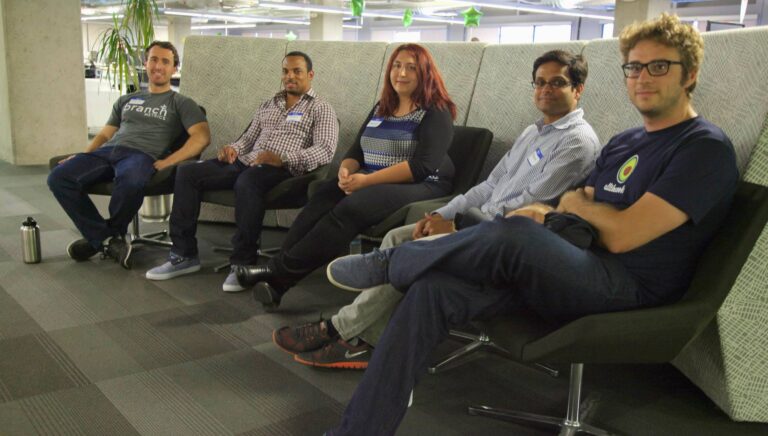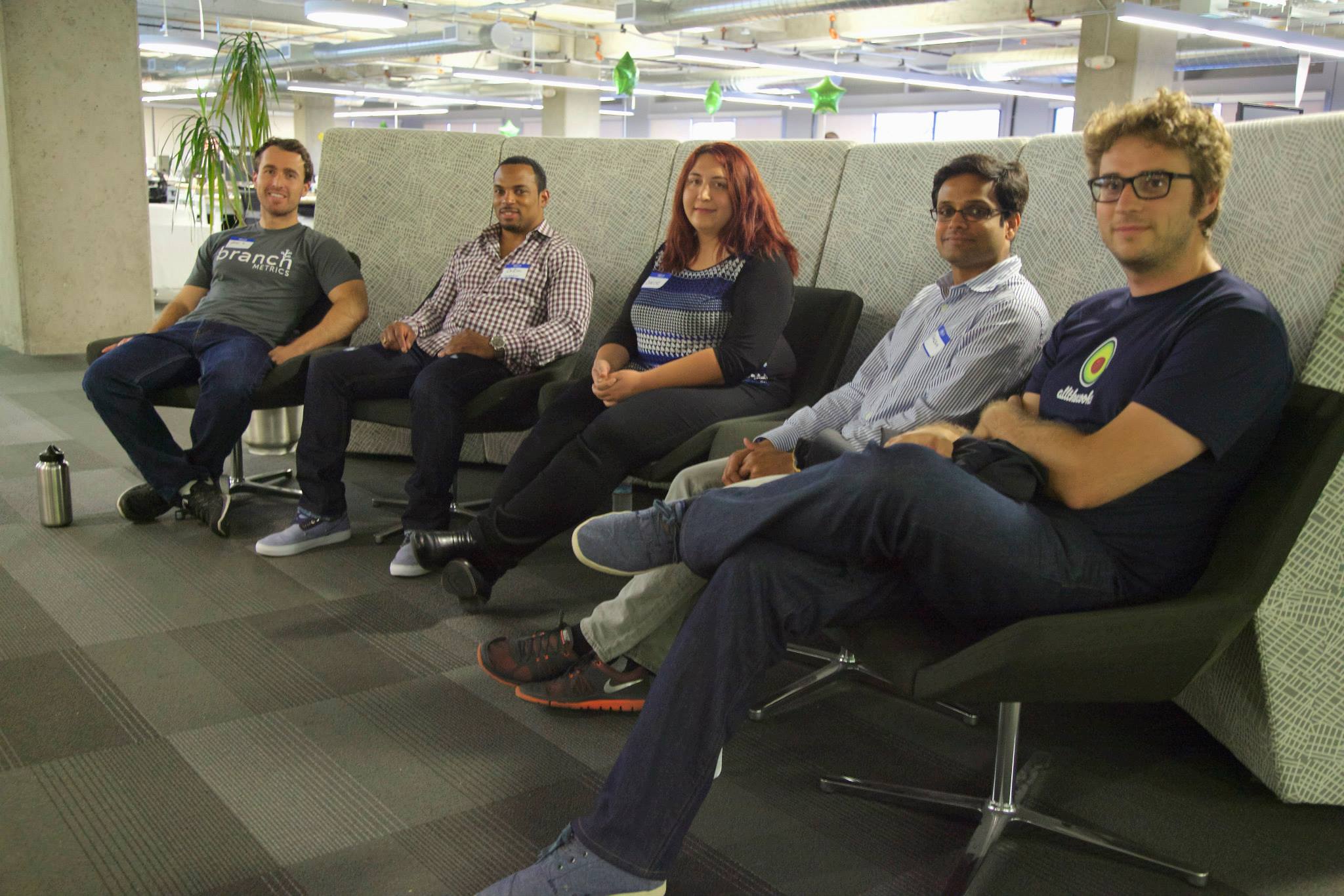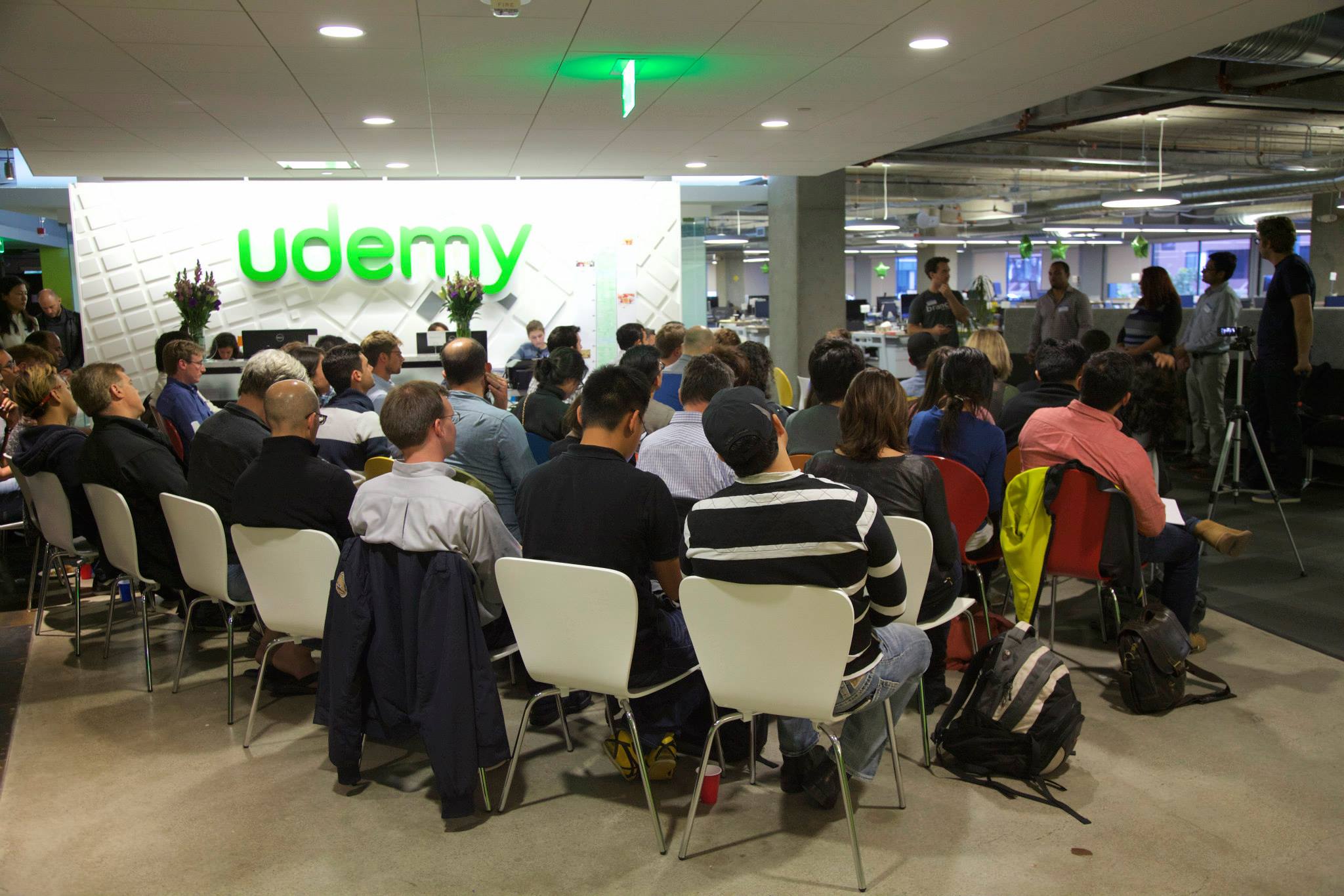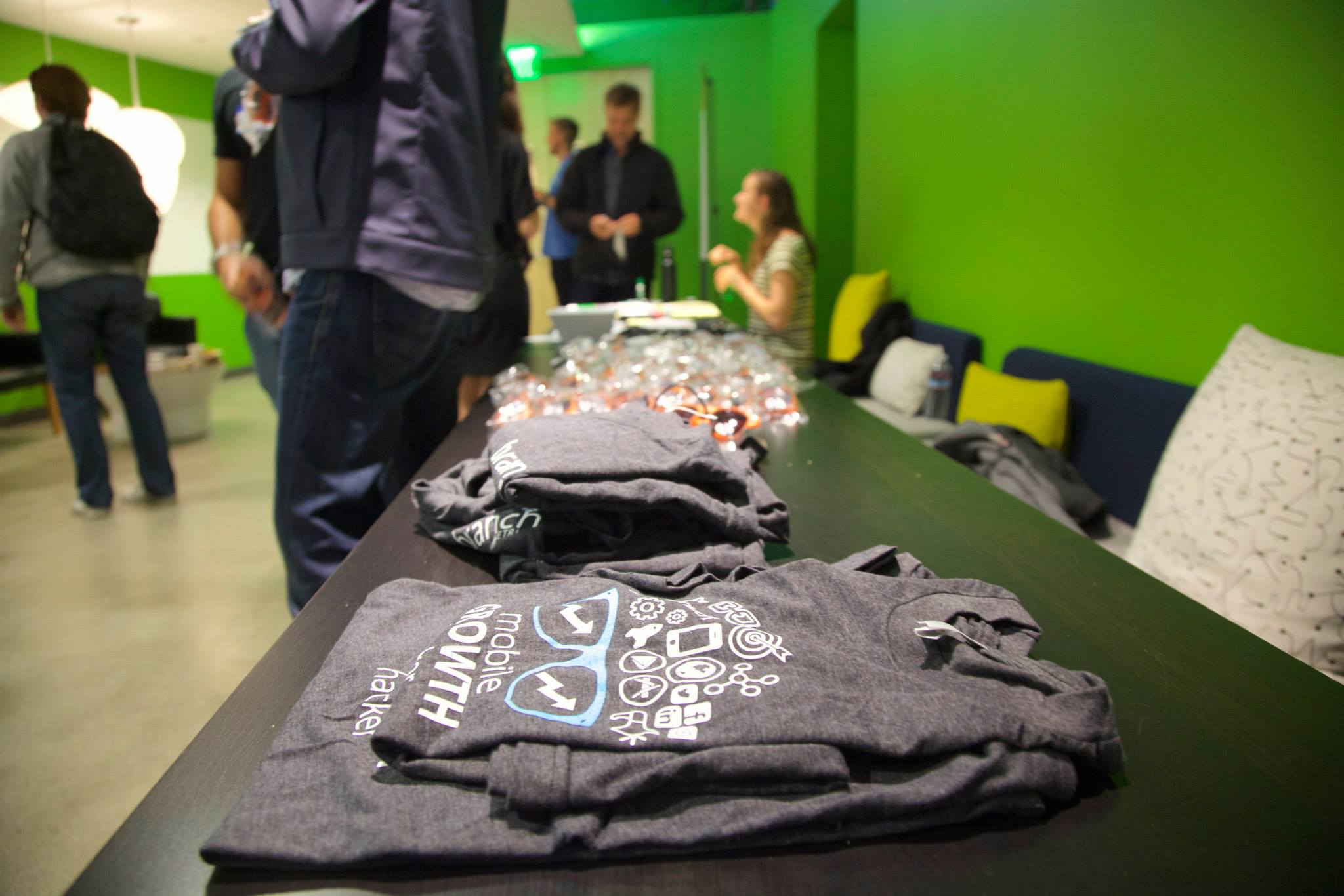Google I/O just wrapped up, so all focus is on the new developer tools released by Google. Since we live in an ever expanding mobile world, Android will likely be one of the biggest topics of the week. And at 78% of smartphone market share as of Q1 2015, the attention is well deserved.
So with Android in mind, we decided to partner with Udemy and Localytics to bring together a group of experts for our Mobile Growth Hackers series to discuss tips and tricks for growing your Android apps.
The full panelist included:
DeRon Brown, iOS and Android Developer, Localytics
Gokce Tombul, Head of Lifecycle Marketing, Udemy
Yogesh Agrawal, Head of Mobile Product Development, Telenav
Rafa Sanches, Co-Founder and lead Android Developer, AllTheCooks
After some networking, pizza, and short introductions, Branch CEO Alex Austin moderated a thoughtful discussion on mobile growth.
What was a feature or campaign that drove new users?
DeRon first talked about his experience at ESPN working on the SportsCenter app for both Android and iOS. He felt the iOS user interface, especially the tab bar, did a better job of visually displaying available content in other tabs. ESPN saw a huge increase in session links with users who utilized these readily visible and available tabs. Less successfully, they found Android users weren’t engaging with the app because they couldn’t actually find some of the top features. To solve this particular problem they had to redesign the entire Android app to mimic iOS.
At Udemy, an online classroom platform, Gokce identified their two main drivers of mobile installs. Initially, their mobile app didn’t support discounts or coupons. They introduced deep links that could drive people from emails directly into discounts within their app. This quickly and dramatically increased awareness and installs of their mobile app. Secondly, they noticed many of their users requesting to watch their lessons offline, for instance while on vacation or traveling. Enabling this feature unlocked the value of the mobile experience.
Yogesh from Telenav’s biggest learning was to never force people to login to create an account because of the large initial drop off rate associated with it. However, a lot of their top features were based around friends sharing their drive or their ETA. In order to utilize these features, they needed the user’s phone number. However, this was easy because on Android, “99% of the time, Android OS gives you the user’s number so you don’t have to ask them to enter it. All they have to do is click a button and it’s in the app.” Additionally they found that once a user enters their phone number, “they become more engaged because they feel like they’ve already done something in the app, so they want to continue to use it.” Reflecting on their biggest mistake, Yogesh initially tried utilizing Facebook login for ease-of-use, but the success rate was only around 18% because people were afraid of what could be done with that data.
What is the best channel you’ve found for organic, non-paid, growth?
Rafa, CEO of AllTheCooks, championed that the best thing you can do to get organic users is to simply have the best app in your category. For him, this meant that when people search for recipe or cooking apps, AllTheCooks will come up first. It’s not really a matter of SEO or ASO, but rather creating an app that organic users will come to and enjoy. From there, in order to grow your organic base he argued you must give users a good experience. This included deep linking through install to bring users directly to the content they were looking for inside the app. Additionally, Rafa felt that a sense of community is important. Users initially liked AllTheCooks because they were cooking with a small group of friends. Once an app gets big, maybe over a million users, he suggested creating smaller groups for them to maintain that same sense of community.
Telenav was able to work out a contract with Sprint for a native pre-installation on every Sprint device. They get about 40% of their android installs from this partnership. Second to this network deal, Yogesh found the next best type of organic growth was in-app sharing. Building a unique sharing feature like “share eta” created high install rates for new users, while customized SMS messages from friends increased their text to install rate to as high as 70%. They found that SMS users typically reminded their friends to download the app that they sent outside of texting conversations, further boosting install rates.
What are some behavioral differences between Android and iPhone users?
The biggest difference between Android and iPhone users seemed to lie in click-through-rate for push notifications. For example, in AllTheCooks, a certain campaign saw a 7-8% CTR on Android while only achieving a 1% CTR on iOS. DeRon attributed this to the difference in the demographic of iOS and Android users.
Yogesh noticed similar results for the push notifications with Telenav. Even after discounting the number of users from the pre-installed Sprint contract, they found that Android users engaged more often with push notifications. Yet Gokce suggested to take CTR numbers for push notifications for a grain of salt, mainly because these rates depend heavily on campaign type. If something was pushed to all users, he guessed they would see about a 2% CTR. Instead, a campaign tailored to a specific set of users can allow that number to jump to 25-30%.
What do you do for non-viral apps where sharing features wouldn’t be valuable?
This question was asked by an audience member and also got an audience response. It was suggested that if you aren’t viral, app store ratings become very important. According to recent research, this is absolutely correct. The study found that 77% of users discovered new apps from viral features such as sharing or word of mouth. High app store ratings or getting featured was the next highest medium with 38% of users reporting that they discovered new apps this way.
This initiated a discussion over harvesting positive ratings in the app store. From his personal experience, Alex added that “if you aren’t actively harvesting positive ratings, the only people who rate you will hate you.” Apptentive confirms this in their post that shows 65% of users naturally leave a rating after a bad experience, when only 49% of users leave a rating after a good one. For a new app without viral features, having a low rating in the app store means you’re toast. So how can you harvest positive reviews and ratings? The entire panel agreed that it’s key to ask people to rate after you know they’ve had a good in-app experience. As DeRon put it, “this doesn’t just mean they’ve opened your app five times. Don’t interrupt what they are there to do. Try to capture their rating after they’ve purchased something or achieved an accomplishment.”
We’re excited to bring our Mobile Growth Hacking Meetups to many new cities in the next few months and we’re always trying to add more. Don’t see any in your city? Let us know and become the ambassador of your town. We’ll do all the hard work of getting a meetup started for you.

























